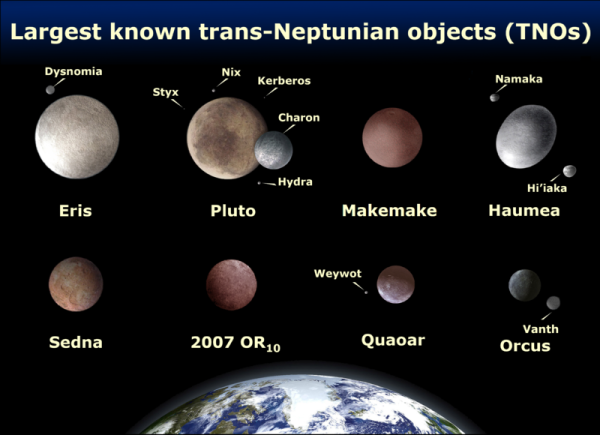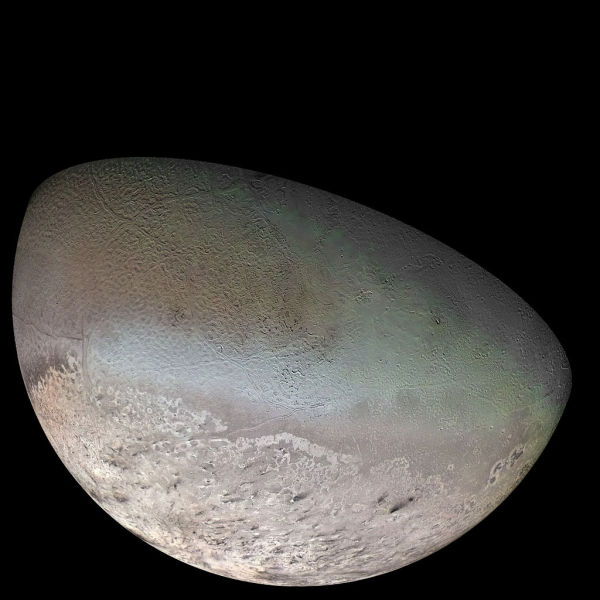“It is not when truth is dirty, but when it is shallow, that the lover of knowledge is reluctant to step into its waters.” -Friedrich Nietzsche
Out beyond Neptune, the last of our Solar System's gas giants, the icy graveyard of failed planetesimals lurks: the Kuiper Belt. Among these mixes of ice, snow, dust and rock are a number of worlds -- possibly a few hundred -- massive enough to pull themselves into hydrostatic equilibrium.
The most famous among them are Pluto, the first one ever discovered, and Eris, of comparable size but undoubtedly more massive. But there's an even larger, more massive object from the Kuiper Belt than either of these, yet you never hear about it: it's Triton, the largest moon of Neptune!



I'm still sad that they took away the name "Xena" and substituted "Eris."
:-(
So if Triton was the heaviest object in the Kuiper Belt, and Neptun had enough gravitatonal force to pull it out, shouldn't the smaller objects be pulled out as well?
So what are the odds that out of thousands of belt objects the largest would be the one to be captured?
The force of G is proportional to M1 * M2. IOW the orbits of the bigger massed kuiper belt objects are more heavily perturbed by the planets and the sun.
I'm thinking a heavier object would experience more tidally induced drag when it has a close gravitational interaction with a deformable body such as gas giant.
@eric, "The force of G is proportional to M1 * M2."
But the acceleration is a = F/m, so INVERSELY proportional to mass. The result is that an object's acceleration is not affected by its mass, only by the other body's mass.
And the distance apart.
But eric is talking about the force not the acceleration. Hence his statement is right, and yours about the acceleration is right too, but your claim that eric is incorrect is, itself, false.
Is there any idea why the Oort sphere has its density peak at about 1 ly?
What's about the transition between Kuiper-Belt and Oort objects: Why does the angular momentum get lost? Are Oort objects not part of the (rotating) system?